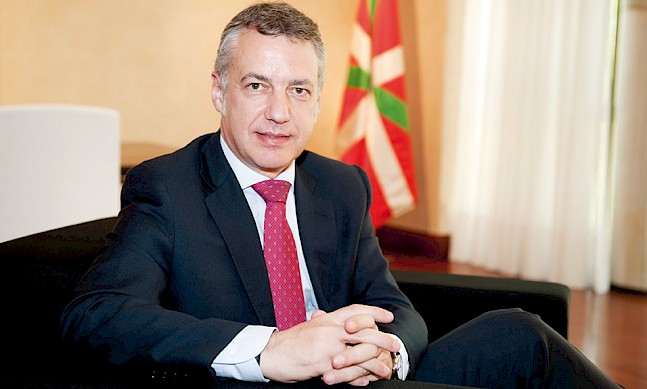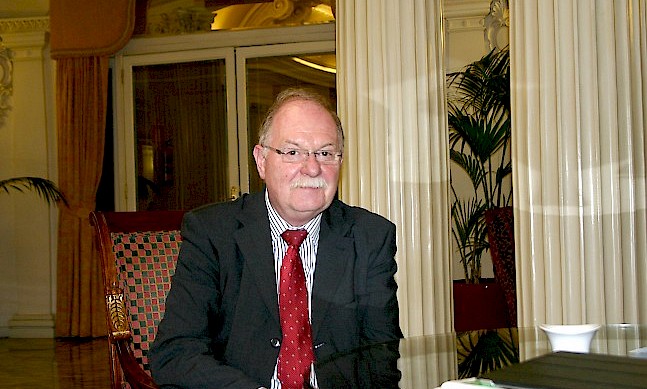With over one hundred exhibitions and visitor numbers topping ten million, the Guggenheim Museum Bilbao has been a roaring success since it opened its doors in 1997. Known for its otherworldly architecture, the museum has played an integral role in the transformation of Bilbao from post-industrial backwater to a modern cultural hotspot. The Report Company met with Juan Ignacio Vidarte, the museum’s managing director, to find out more.
The Report Company: Why did the Guggenheim Foundation decide to open a museum in Europe?
Juan Ignacio Vidarte: The Guggenheim Foundation has had a presence in Europe since the 1970s through the Peggy Guggenheim Collection in Venice. The foundation decided to expand its global presence in the late 80s and early 90s because it felt a cultural institution could not be constrained to a single city, even if this city happens to be New York. In a globalised world, they thought this was not enough. So they analysed different options, such as expanding the Venice collection. They also looked at other European cities. Bilbao was by then beginning its own transformation process, and part of that strategy included reinforcing its cultural identity in a way that would reach beyond the city and even the region itself. As a result, these two processes came together. Bilbao offered to house the museum, and the foundation concluded that the city did, in fact, have the geographical and conceptual features required for the Guggenheim. The fact that the museum could become a transformational element for the entire city weighed heavily on the decision.
TRC: What was the initial reaction to the choice of Bilbao?
JIV: Initially there was a lot of scepticism. When the idea first came up in 1991, Bilbao was in a serious economic crisis because traditional industries were in decline. There were no previous examples of using cultural infrastructure as drivers of economic growth. However, the foundation and the Basque authorities behind the project were convinced that if the museum was done according to established parameters of quality, both in terms of content and architecture, then it could be a transformational project. This would be especially true if other projects slated for the city were also carried out, such as cleaning up the estuary, building the underground system, and re-zoning the land on either side of the Nervion. If all this were done, the results would surely be as advertised.
TRC: How did the results compare with the expectations of the project?
JIV: The feasibility study of 1991 talked about all the things that eventually came to pass. In fact, if anything, that study fell short in its projected figures. Qualitatively, all the goals have been met: the museum was an engine of change, it physically transformed an area of the city, it helped transform its economic foundations, it attracted many foreign visitors who in turn fuelled the local and regional economy, and it projected a global image of Bilbao and the Basque Country at a time when this was starting to become an increasingly important issue. All of this was put down on paper a full six years before the museum opened its doors.
“The building had to convey the scale of the ambition: it was not just about housing an art collection, but about transforming a city.”Tweet This
TRC: How quickly did the project get underway?
JIV: The entire process was very fast, under a year, which included the feasibility study and the search for the right architect. There was a restricted competition for eight to ten studios who were asked to present their proposals, and there were three finalists. Of these, Frank O. Gehry was unanimously voted the winner by the jury because his work was very different. It also respected the requirements of the project, in terms of matching the quality of the museum content and providing enough space and versatility to simultaneously display a 120-tonne sculpture and a Kandinsky watercolour in optimal conditions.
The selected site, Abandoibarra, had been a marginal port area. The new building had to radically change its character and transform it into an urban area filled with opportunities for subsequent development. Gehry perfectly understood what was expected of the building, both on the inside and as an element of change for the city.
TRC: Was it a prerequisite that the building should be a work of art in itself?
JIV: I guess that depends on the genius of the architect, but we did ask for the building to have a personality comparable with the art to be displayed within. What we did not want was a neutral building, and this was initially a point of contention. The building had to convey the scale of the ambition: it was not just about housing an art collection, but about transforming a city. I think this is one of Gehry’s best buildings.
TRC: What surprised you most about the implementation of the project?
JIV: The speed and the scale. This project was very ambitious from the beginning. Bilbao had been a very prosperous city until the 1980s, when everything began to be bad news. Many of its industries began collapsing for structural reasons and this decline affected the city and the citizens, who went through an identity crisis. That reality drove many of the projects that came later, such as the Guggenheim, which was also aimed at proving to the people of Bilbao that change was possible. That change did not necessarily have to be bad and that it could bring good things. That approach is what helped rebuild people’s self-confidence.
TRC: What made the project so successful?
JIV: The most surprising part of the Guggenheim effect was its scale. In order to meet its goals, the museum had to be consolidated as a recognised international institution, and that was going to take a number of years, or so we thought. The museum opened in October 1997 and the inauguration was a headline story on CNN’s evening news, which was the only global media outlet at the time. That meant that lots of people became aware of it from the beginning, and it explains why the museum attracted over a million visitors in the first year alone.
“Even though Bilbao is a small city, it must keep aiming for an international profile while never losing sight of its roots.”Tweet This
TRC: What is the current share of foreign visitors to the museum?
JIV: Right now two out of three are international visitors, around 70 percent. The rest are from Spain, with 10 to 15 percent coming from the Basque region. As for international visitors, one fifth of them are French, and after that come other European countries. France is very interesting to us because a fifth of the teachers and schoolchildren who come here are also French. At first we didn’t have any educational programs in French, but we had to introduce them immediately when we realised that all these schools from southern France were coming to visit. The interesting fact is that they are coming on day trips, not as tourists, which means that they are treating this as their own regional museum.
TRC: How did you decide on the museum’s content?
JIV: To us, the content and the container are two sides of the same equation. The container is essential but only to the extent that the content also makes sense. The museum comprises a permanent and a temporary collection. The permanent part is defined by non-traditional parameters: part of it is proprietary but all the collections from other Guggenheim museums are also a part of the permanent collection, so they keep rotating and going on display in different places. Then we have the temporary exhibitions, which are very important to create renewed interest in the museum. We have 4 or 5 shows a year, sometimes organised jointly with Guggenheim New York, sometimes with European museums, and other times created exclusively for us.
TRC: Can you tell us about the dog made of flowers sitting outside the museum entrance?
JIV: That is Puppy, a sculpture by Jeff Koons and part of our proprietary collection. It is just one of the pieces we have placed outside the building, in our surrounding environment, just like we have artwork by Yves Klein and others. There is also a sculpture by Daniel Buren on the bridge. This is a sculpture-heavy museum, which is a sculpture in itself. We thought that Puppy would really add to the museum because of its size and the fact that it is alive at some level through the 60,000 or 70,000 flowers that make up its skin and are replaced twice a year. It has become an icon of the Guggenheim and, in some ways, of the city itself. Many newlyweds come to get their picture taken in front of Puppy.
“It will no longer be good enough to simply find a painting hanging on a wall or a sculpture sitting in the middle of a room. There will be expectations of access to greater information.”Tweet This
TRC: Can you tell us about internationalisation, particularly the Abu Dhabi project?
JIV: I am in charge of global strategy for the Guggenheim Foundation and Abu Dhabi is the result of an agreement reached seven years ago between the foundation and Abu Dhabi to create a museum that would also transform the city there, particularly the island where it is located. There are three major cultural projects going on there right now, for three different museums, one of which is ours. Another one is the Louvre Abu Dhabi.
TRC: How can the Guggenheim Bilbao continue to be pioneering in the future?
JIV: Guggenheim Bilbao had two key elements at its origin that I think are still important today. One is innovation, not being afraid to do things differently if you think that it will bring added value, and the other is an international outlook. I think this must never be forgotten. Even though Bilbao is a small city, it must keep aiming for an international profile while never losing sight of its roots.
TRC: Where do you see the challenges for the future?
JIV: The world of culture and art is fascinating and very competitive. This museum has reached a certain cruising speed, but it faces the challenge of renewing itself in order to continue to be relevant 20 years from now. That means doing things differently, since the world changes and visitor expectations are also changing. We are increasingly accustomed to reading the news on a tablet, and that affects the museum too. I don’t worry that people will stop wanting real, physical museum experiences in favour of virtual visits. However, what a visitor expects to find when he walks in will be different. It will no longer be good enough to simply find a painting hanging on a wall or a sculpture sitting in the middle of a room. There will be expectations of access to greater information, for instance. As managers we need to understand this and address it, and that is not an easy task.


 Photo: Guggenheim Museum Bilbao
Photo: Guggenheim Museum Bilbao







